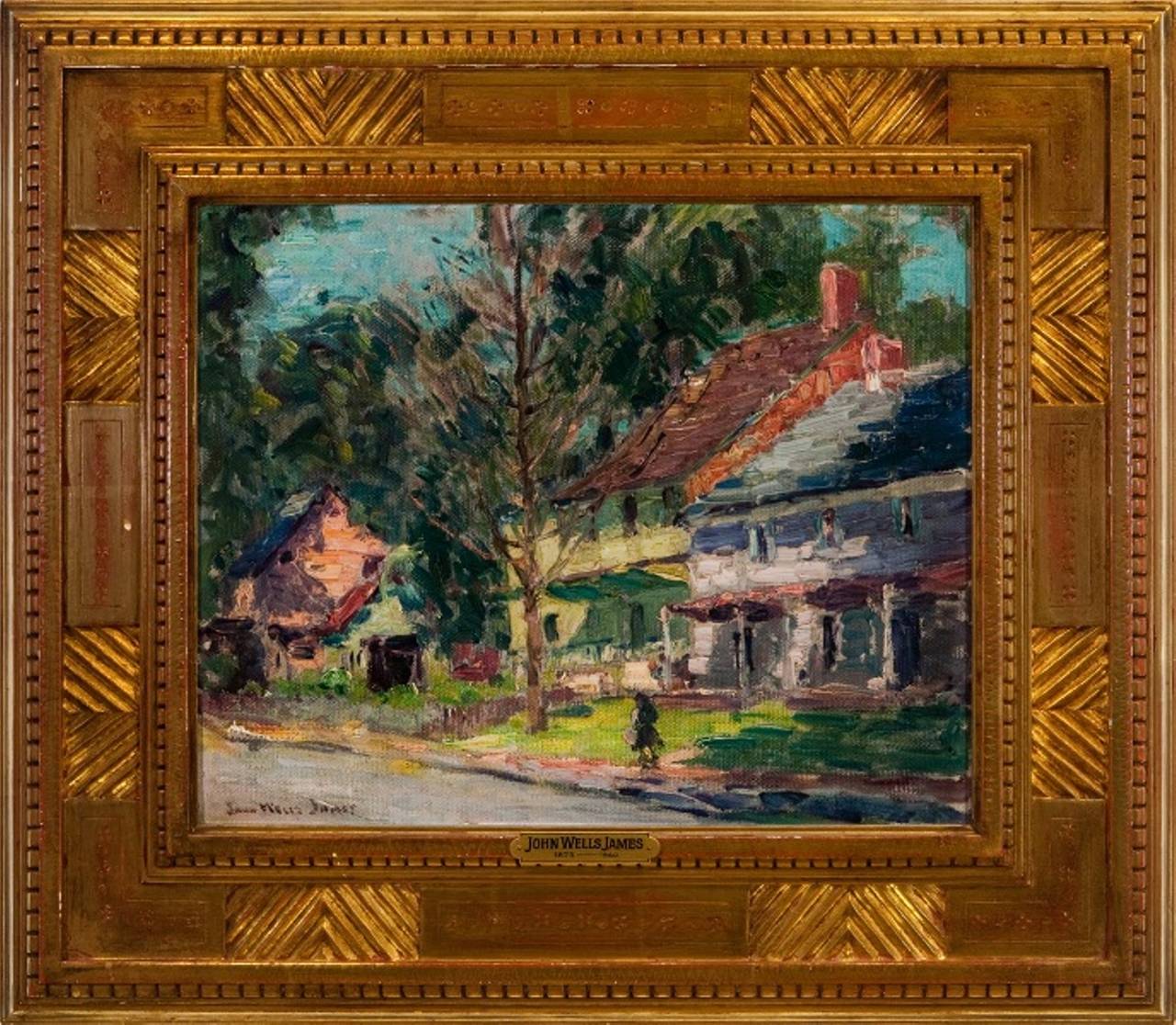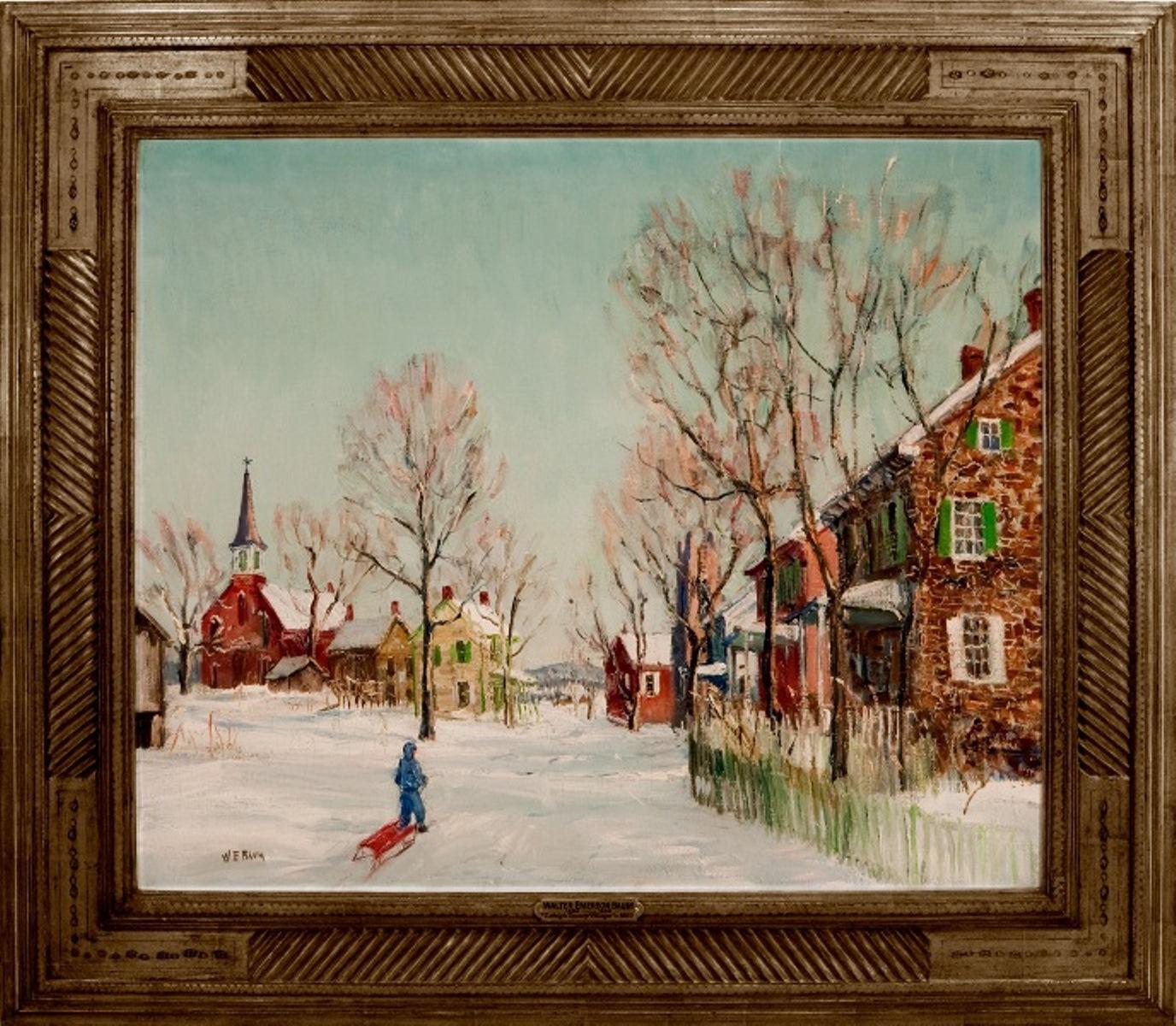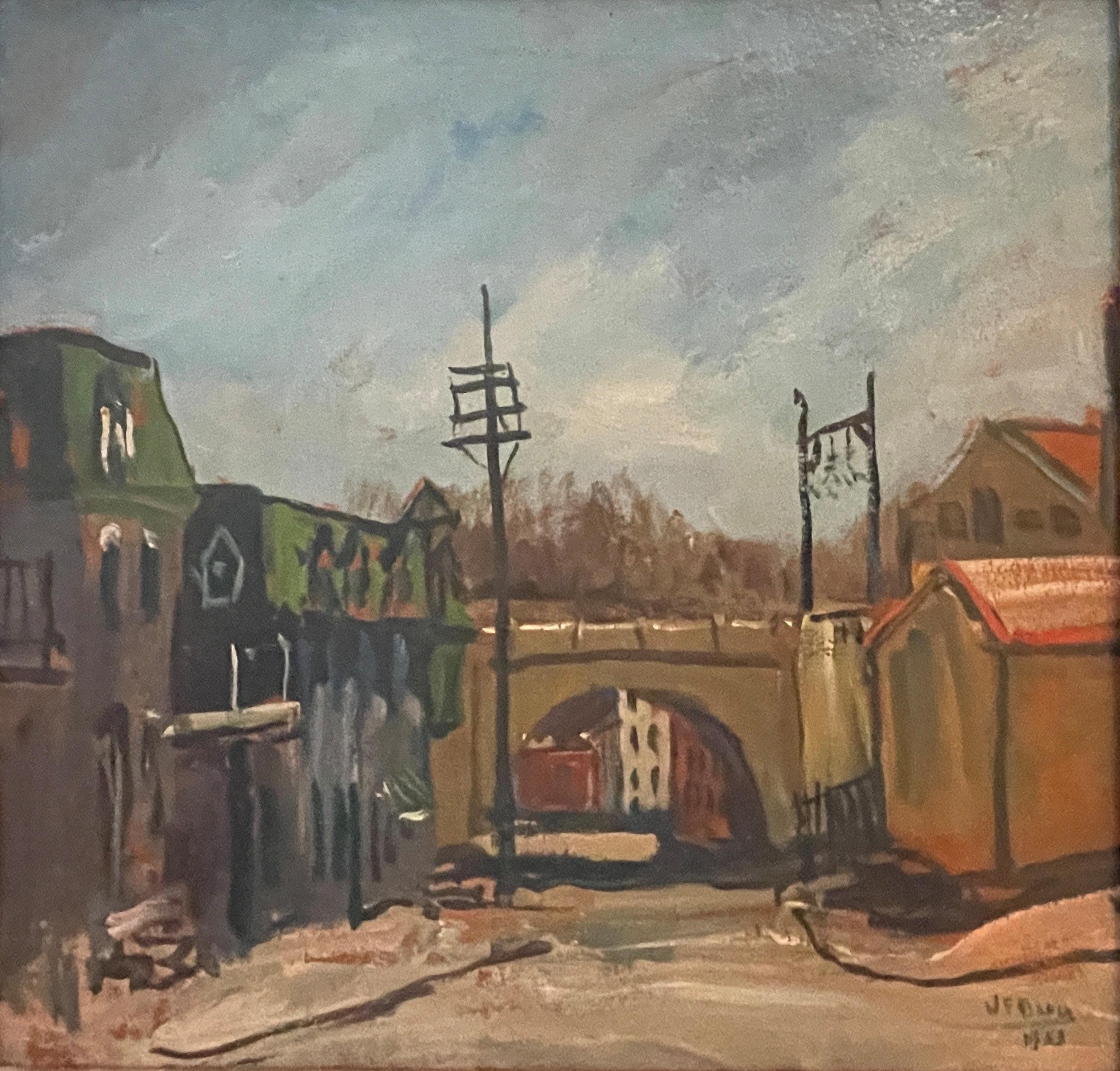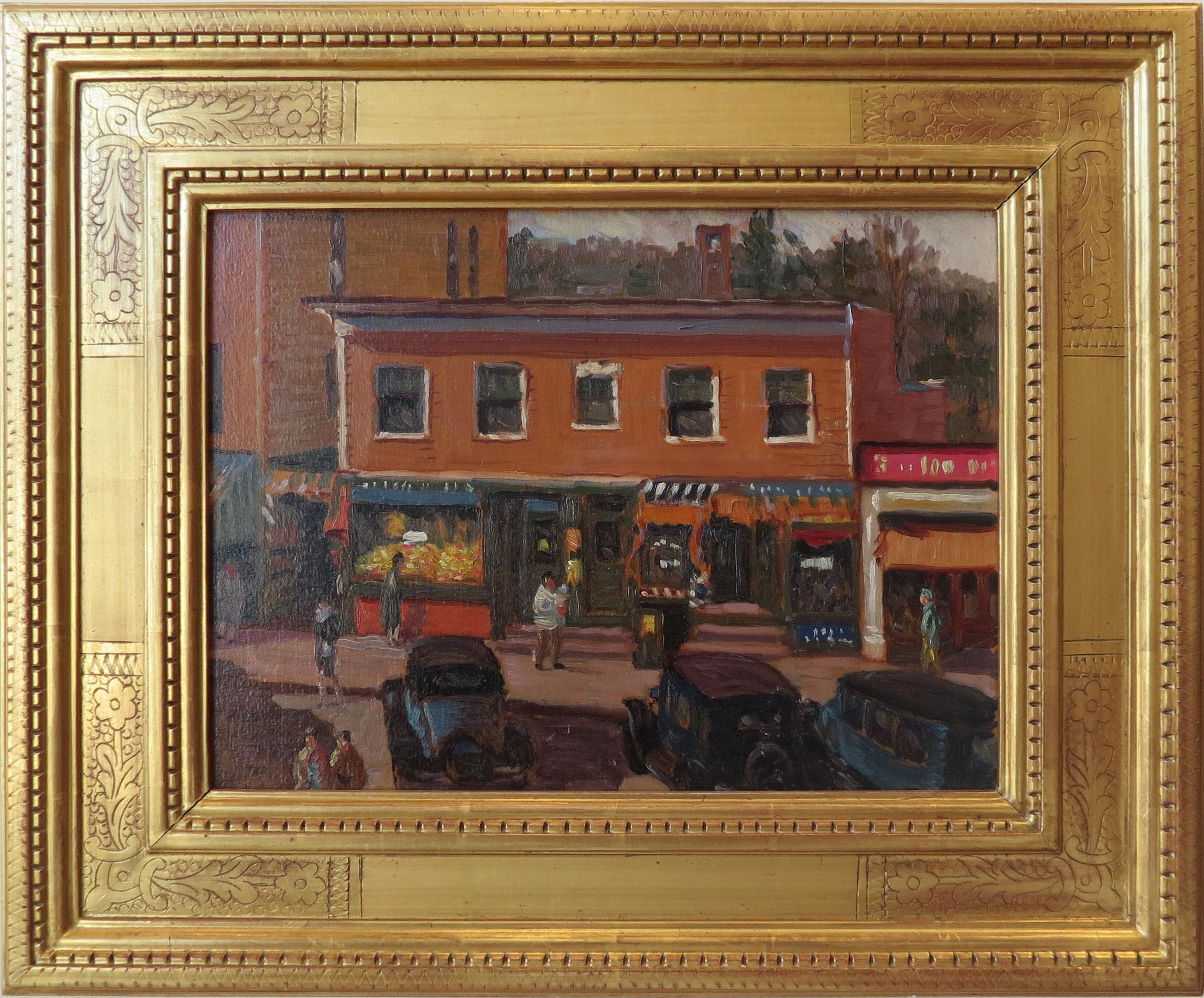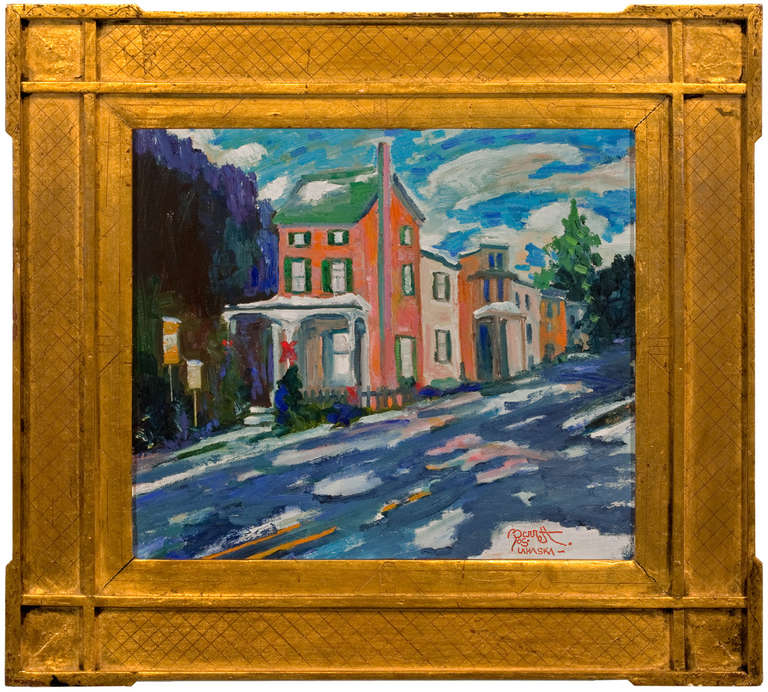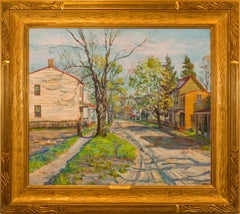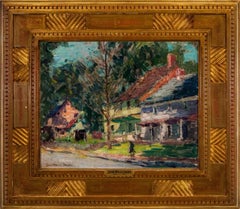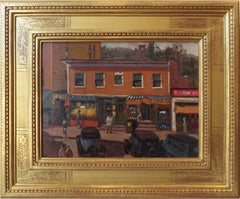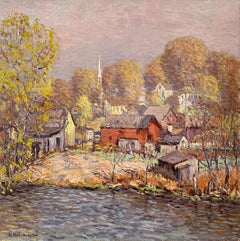Items Similar to “Evening in Newark”
Want more images or videos?
Request additional images or videos from the seller
1 of 5
John R. Grabach“Evening in Newark”
$111,875
£84,540.25
€97,623.24
CA$156,328.42
A$173,459.56
CHF 90,861.85
MX$2,127,079.82
NOK 1,155,731.40
SEK 1,090,961.15
DKK 728,037.75
Shipping
Retrieving quote...The 1stDibs Promise:
Authenticity Guarantee,
Money-Back Guarantee,
24-Hour Cancellation
About the Item
Illustrated in "New Hope for American Art", pg. 194.
Jim’s of Lambertville is proud to offer this artwork by:
John R. Grabach (1886 - 1981)
John Grabach was a highly regarded New Jersey artist, teacher, and author of the classic text, “How to Draw the Human Figure”. He was born in Massachusetts, and with his widowed mother, moved to Newark, New Jersey when he was eleven.
Starting out as a die-cutter for a silverware firm, Grabach also designed important works of sterling silver hollow ware and Art Deco glass designs for several high end retail manufacturers. He designed United States stamps for the Treasury Department and holiday greeting cards for several firms. Grabach enrolled in courses at the Art Students League in his spare time, studying under George Bridgeman, Frank Dumond, Kenyon Cox, and H. August Schwabe.
Considered a leading figure in the Newark School of Painters, his powerful Ashcan style paintings depicting scenes of New York City and Newark are truly American masterpieces. He captures the expressions and mood of his subjects in those complex compositions on par with any of the highly regarded Ashcan painters of the period. Similar in many ways to his contemporary, George Bellows, Grabach was gifted in portraying the everyday events of working class folks, and translating their ordinary daily routines into something extraordinary to look at.
Whether it be his native blue-collar Newark neighborhood, a crew of gruff dockworkers or something as regular and uninteresting as men eating soup, John Grabach had the ability to turn virtually any subject into appealing and worthy art.
From the 1920s through the 1960s, Grabach was the subject of numerous one-man exhibitions in prestigious galleries and institutions across the country. In 1980, the Smithsonian Institute in Washington, D.C., honored Grabach with a solo retrospective show of his work. This was an unusual tribute for a still living artist.
Grabach was a dedicated and beloved teacher at the Newark School of Industrial Design for many years and among his favorite students was Henry Gasser.
Grabach’s work is in the permanent collections of the Smithsonian, the Corcoran Gallery of Art, the Art Institute of Chicago, and the Philadelphia Art Alliance, among many others.
Source: New Hope for American Art, James Alterman
- Creator:John R. Grabach (1886 - 1981, American)
- Dimensions:Height: 46 in (116.84 cm)Width: 52 in (132.08 cm)Depth: 2 in (5.08 cm)
- Medium:
- Movement & Style:
- Period:
- Condition:
- Gallery Location:Lambertville, NJ
- Reference Number:Seller: 551stDibs: LU3744766282
About the Seller
5.0
Vetted Professional Seller
Every seller passes strict standards for authenticity and reliability
Established in 1997
1stDibs seller since 2014
38 sales on 1stDibs
- ShippingRetrieving quote...Shipping from: Lambertville, NJ
- Return Policy
Authenticity Guarantee
In the unlikely event there’s an issue with an item’s authenticity, contact us within 1 year for a full refund. DetailsMoney-Back Guarantee
If your item is not as described, is damaged in transit, or does not arrive, contact us within 7 days for a full refund. Details24-Hour Cancellation
You have a 24-hour grace period in which to reconsider your purchase, with no questions asked.Vetted Professional Sellers
Our world-class sellers must adhere to strict standards for service and quality, maintaining the integrity of our listings.Price-Match Guarantee
If you find that a seller listed the same item for a lower price elsewhere, we’ll match it.Trusted Global Delivery
Our best-in-class carrier network provides specialized shipping options worldwide, including custom delivery.More From This Seller
View All"Spring on Risdon Street, Mt. Holly, NJ"
By Hugh Campbell
Located in Lambertville, NJ
Jim’s of Lambertville is proud to offer this artwork.
Signed lower right.
Complemented by a hand carved and gilt frame.
Hugh Campbell (1905-1997)
Born December 4, 1905 in Atch...
Category
20th Century American Impressionist Landscape Paintings
Materials
Canvas, Oil
"A New Hope Street"
By John Wells James
Located in Lambertville, NJ
Jim’s of Lambertville is proud to offer this artwork.
Signed lower left.
Complemented by a hand carved and gilt frame.
Illustrated in "New Hope for American Art"
John Wells Jame...
Category
1920s American Impressionist Landscape Paintings
Materials
Oil, Canvas
"Lehigh County Village"
By Walter Emerson Baum
Located in Lambertville, NJ
Jim’s of Lambertville is proud to offer this artwork by:
Walter Emerson Baum (1884 - 1956)
Born in Sellersville, Pennsylvania, Walter Baum was one of the only members of the New Ho...
Category
1930s American Impressionist Landscape Paintings
Materials
Canvas, Oil
"Main Street"
By Morris Hall Pancoast
Located in Lambertville, NJ
Jim’s of Lambertville is proud to offer this artwork by:
Morris Hall Pancoast (1877 – 1963)
Born in Salem, New Jersey, Morris Hall Pancoast was a painter, illustrator, and cartoonist. He took night courses at Drexel University and enrolled at the Pennsylvania Academy of the Fine Arts under Thomas Anshutz...
Category
1930s American Impressionist Landscape Paintings
Materials
Oil, Board
"Little House, Lambertville, NJ"
By Joseph Barrett
Located in Lambertville, NJ
Jim’s of Lambertville is proud to offer this artwork.
Signed lower right
Joseph Barrett (b. 1936)
Joseph Barrett was born in Midland, North Carolina, in 1936 and studied at the M...
Category
20th Century American Impressionist Landscape Paintings
Materials
Oil, Canvas
"Church Street"
By Joseph Barrett
Located in Lambertville, NJ
Jim’s of Lambertville is proud to offer this artwork.
Signed lower right.
Joseph Barrett (b. 1936)
Joseph Barrett was born in Midland, North Carolina, in 1936 and studied at the ...
Category
20th Century American Impressionist Landscape Paintings
Materials
Oil, Canvas
You May Also Like
"Manayunk" Walter Emerson Baum, Pennsylvania Impressionist Landscape of Manayunk
By Walter Emerson Baum
Located in New York, NY
Walter Emerson Baum
Manayunk, 1953
Signed and dated lower right; titled and dated on the reverse
Oil on board
12 x 14 inches
Walter Baum was born December 14, 1884 in Sellersville,...
Category
1950s American Impressionist Figurative Paintings
Materials
Oil, Board
Early View of Stockton, New Jersey
Located in Bryn Mawr, PA
Kenneth Nunamaker never took a formal art lesson. His “training” began during his travels out West as a young man, where he painted in his spare time. It continued informally through...
Category
1930s Impressionist Landscape Paintings
Materials
Oil, Board
Evening - New York - Impressionist Landscape Oil Painting by Johann Berthelsen
By Johann Berthelsen, 1883-1972
Located in Marlow, Buckinghamshire
Stunning oil on canvas circa 1955 by American impressionist painter Johann Henrik Carl Berthelsen. The piece depicts a view of the illuminated waterfront buildings from the East Rive...
Category
1950s American Impressionist Landscape Paintings
Materials
Canvas, Oil
Side Street, Princetown, New York
By Alexander Redein
Located in San Francisco, CA
This artwork titled "Side Street, Princetown, New York" c 1960, is an oil painting on panel by noted American artist Alexander Redein, 1912-1990. It is signed at the lower right corn...
Category
Mid-20th Century American Impressionist Figurative Paintings
Materials
Oil
Gloucester Scene Landscape Painting by Rockport Artist TM Nicholas
By T.M. Nicholas
Located in Rockport, MA
A picturesque view of a coastal Gloucester, Massachusetts bathed in morning light. Overlapping rooftops lead the eye to a towering church steeple, standing out against the soft blues...
Category
21st Century and Contemporary American Impressionist Landscape Paintings
Materials
Oil
View of Town at Dusk
Located in Astoria, NY
Janos Vaszary (Hungarian, 1867-1939), View of Town at Dusk, Oil on Panel, signed "Vaszary J." lower left, carved giltwood frame. Image: 11.75" H x 16.75" W; frame: 16.75" H x 21.75" ...
Category
Late 19th Century Impressionist Landscape Paintings
Materials
Canvas, Oil

